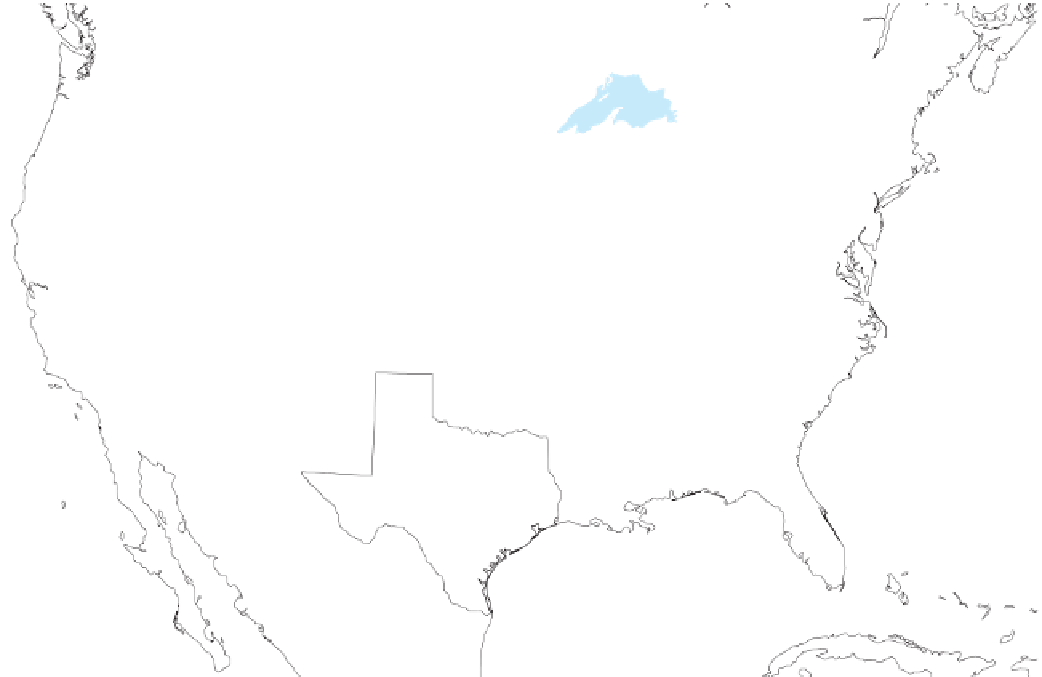Geography Reference
In-Depth Information
Some less populated countries show even lower IMRs. Sin-
gapore has over 4.5 million people and an incredibly low
IMR of just under 3, and Sweden's nearly 9 million people
record an IMR of 2.8.
In 2008, 22 countries still reported an IMR of 100 or
more, and several had rates of 125 or higher—that is, one
death or more among every eight newborns. Sierra Leone
and Afghanistan had the highest IMR: 165. Dreadful as
these fi gures are, they are a substantial improvement over
the situation 20 years ago (although they are not much
improved since 1997). Globally, infant mortality has been
declining, even in the poverty-stricken regions of the world.
Each of these observations about infant mortality
rates considers what is happening within an entire coun-
try. The IMR varies within countries and gives us a lens
into variations in access to health care and health educa-
tion within a country. A statistic typically varies by region,
ethnicity, social class, or other criteria. The IMR of South
Africa is 48 per 1000, an average of all the people within
the country's borders. The IMR for South African whites
is near the European average; for black Africans it is
nearer the African average; and for the Coloured and
Asian population sectors it lies between these two fi gures.
The reported average for South Africa does not tell ethnic
and class differences within South Africa.
In the United States, in 2004, the IMR for African
Americans was 13.6, above the countrywide average of 6.8
and the IMR of 5.7 for non-Hispanic whites. The risk fac-
tors that lead to a high IMR affl ict African Americans at a
much higher rate than non-Hispanic whites in the United
States. According to the Centers for Disease Control, 88.9
percent of non-Hispanic whites but only 76.5 percent of
African Americans received prenatal care starting in the
fi rst trimester of their pregnancy. Lower education levels
for African American women also contributed to the higher
IMR. One risk factor that contributes to high IMR, smok-
ing during pregnancy, was higher for non-Hispanic whites.
The Centers for Disease Control found that 13.8 percent
of non-Hispanic whites smoked cigarettes during preg-
nancy in 2004, and 8.4 percent of African American women
smoked during pregnancy.
The IMR in the United States also varies by
region, with the highest IMR in the South and the low-
est in the Northeast (Fig. 2.19). Race, ethnicity, social
VT
5.1
ME
6.3
WA
4.8
ND
7.5
MT
6.4
NH
5.4
MA
4.9
MN
5.6
NY
5.6
OR
5.8
WI
6.5
RI
7.4
ID
6.8
SD
6.4
MI
7.9
CT
6.6
WY
7.4
D.C.
13.1
PA
7.6
N
J
5.2
IA
5.5
DE
7.5
OH
7.7
NE
6.8
NV
6.4
IN
7.6
IL
6.7
MD
8.0
WV
7.5
UT
5.1
VA
7.8
CO
6.1
KY
6.7
MO
7.5
CA
5.2
KS
7.9
NC
8.5
TN
8.3
SC
8.6
UNITED STATES
INFANT MORTALITY
RATE
9 or more
OK
8.5
AZ
6.8
AR
7.7
NM
6.3
GA
8.0
AL
9.9
MS
10.0
TX
6.3
7-8.9
LA
9.2
5-6.9
FL
7.1
Below 5
AK
6.5
HI
6.5
0
200
400 mi
0
200
400 km
0
400 mi
0
100 mi
0
400 km
0
100 km
Figure 2.19
Infant Mortality Rate in the United States.
Infant deaths per 1000 live births.
Data from
:
Centers for Disease Control, National Vital Statistics Reports, 2007.


















































































































































































































